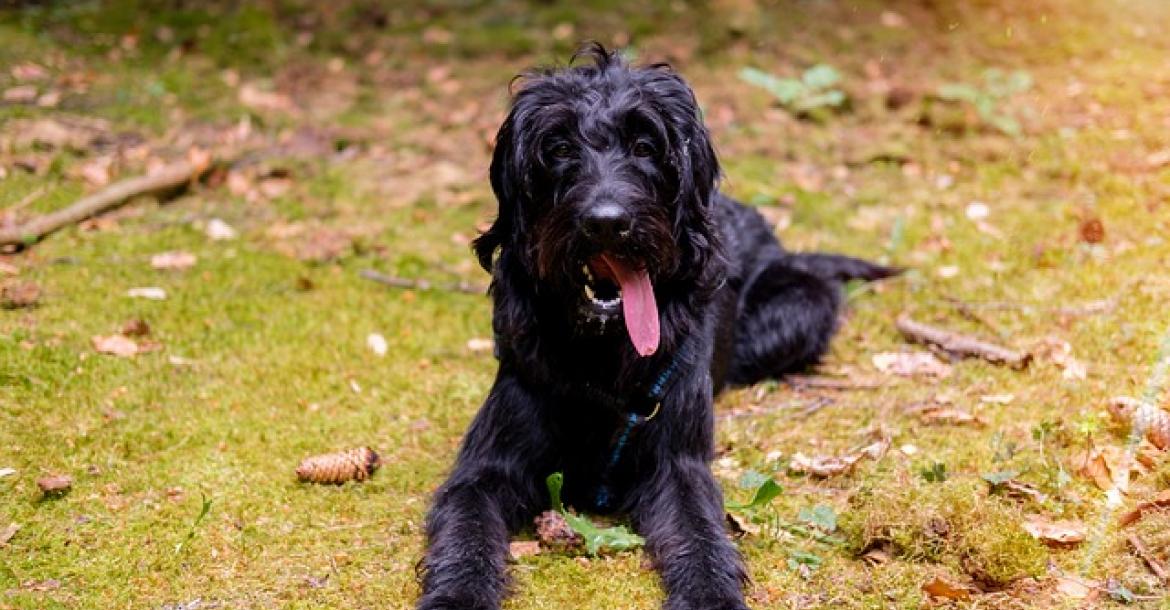Dogs can learn to stand heat
Heatstroke, a phenomenon that means one gets ill because of exposure to heat. It has been known for centuries, but how does it works fysically was by no means clear. This problem does not only apply to humans, it is also something happening to animals. Since in todays climate heat seems to be increasing it is important to know how you deal with these things. Would one cancel an event because of a certain temperature? And what are the actual risks?
Heat and the possible consequences gave - and still gives – a lot of discussion on social media when it comes to sporting events with dogs. But what do we really know about this?
In 2016, a groundbreaking investigation was started by Dr. Anne Carter and Emily Hall MRCVS of Nottingham Trent University and their recommendations are seen worldwide as correct advice.
Their research was among a group of racing greyhounds. Researched was about what actually happened to the body temperature under various circumstances. For this, races were chosen as a research moment because of the explosive effort that is then achieved by the dogs. The location was South Australia where many greyhound races are held and where the average temperature is high.
The conditions varied widely: temperatures were measured from 11.0 to 40.8 ° C and the humidity varied from 17 to 92%. If temperature gets higher, humidity decreases. This has an influence on the body: both people and dogs subconciously trust for some heat to be lost through evaporation. People sweat to evaporate, dogs use panting. At any temperature, high humidity will limit evaporation and reduce heat loss.
The average rectal temperature of 229 greyhounds on arrival at the race meetings was 39.2 ° C ± 0.5 ° C (from 38.2 to 40.5 ° C). After the race there was an increase in the rectal temperature in all dogs. The average post-racing temperature was 41.0 ± 0.5 ° C (from 39.7 to 42.1 ° C) with an average increase of 2.1 ° C.
That is why it is essential dogs are well trained
Shadow appeared to have no effect on the temperature and also the race distances had no effect. Cooling vests do: dogs who wore cooling vests had higher temperature after the race than dogs who had not worn these vests.
It can be concluded that racing or equivalent intensive training in warm weather entails the increased risk that greyhounds develop heat. The risk increases in particular at ambient temperatures ≥38 ° C.
However, under the current management systems in South Australia, no racing greyhounds were found to suffer from heat stroke.
Obviously we are talking about well trained dogs here. The researchers therefore recommended that 38 ° C should be used as a limit for the continuation of competitions.
This is remarkable since in our view the temperatures are often extreme.
The researchers also looked at factors such as color and gender, and color appeared to have little influence: male black animals did develop a slightly higher temperature than average. The difference was not in the amount of sunlight. The temperature itself mattered.
Smaller dogs also had smaller chances of higher temperatures than large ones, slenderness turned out to be an advantage here.
It can be concluded that racing or equivalent intensive training in warm weather involves an increased risk for greyhounds to develop heat. The risk increases particularly at ambient temperatures ≥38 ° C. Large, dark-colored greyhounds were at slightly greater risk of developing a high body temperature than small, light-colored animals when heavy exertion is made in warm conditions. Cooling before and after the competition should therefore be applied in particular to large, dark dogs to prevent the development of heat stroke. Heat stroke in dogs is defined as a core body temperature above 39.2 ° C.
So, heat stroke in dogs is associated with a core body temperature aver 40 ° C. But although both temperatures were exceeded in (some) dogs after a race, the normal range quickly returned to all dogs."
The researchers therefore recommended that an outdoor temperature of 38 ° C should be used as the limit for allowing competitions to continue.
This would indicate that dogs very quickly reach internal body temperatures that are considered abnormal and dangerous for dogs, but the fact that the temperature is returning to normal very quickly seems to indicate that this is completely normal. The fact that very little research has been done so far also points to this: if there were very frequent problems, much more would have been known about that, the researchers claimed. It is therefore plausible that dogs often reach a high temperature for a short period of time because of perfectly normal efforts, and it drops very quickly as well. But since no one temperatures his dog every hour, something like that is not (yet) known.
"Higher risk groups are: brachycephal breeds that (may) suffer from respiratory disorders, overweight dogs and poorly conditioned dogs. "
This suggests that dogs that are untrained and not used to training at higher temperatures are more at risk than those who are sensible and have gradually grown used to working in warmer temperatures.
Of course it is important to be well aware of the limits of your dog: anyone who sees signs should cool down. Those signs are:
- Extreme panting: panting much heavier than normal, with an extremely long tongue that can turn dark red.
- Behavioural change: confusion, unsteady on legs, dragging toes or tripping. When a dog looks as if it is drunk, you are almost too late and you have to cool them as soon as possible and go to a vet.
- Diarrhea or vomiting.
- Actively looking for shade / water or unwilling to run.
It is also important to check beforehand to be sure your dog is suitable for exercise during heat:
- If a dog is not in good shape, is not fit, is overweight or has not been trained regularly: do not exercise in hot weather.
- If a dog has ANY form of disease that can cause it to dry out a little (especially vomiting and diarrhea): don’t exercise in hot weather.
- If a dog has a heart or respiratory condition: do not exercise in hot weather.
- When the dog is breathing audibly while at rest, this may be a sign of an underlying problem, do not take a risk.
- If you know that your dog will do anything to please you, do not consider exercising. Such dogs can cross their limits and only show something when it is too late.





